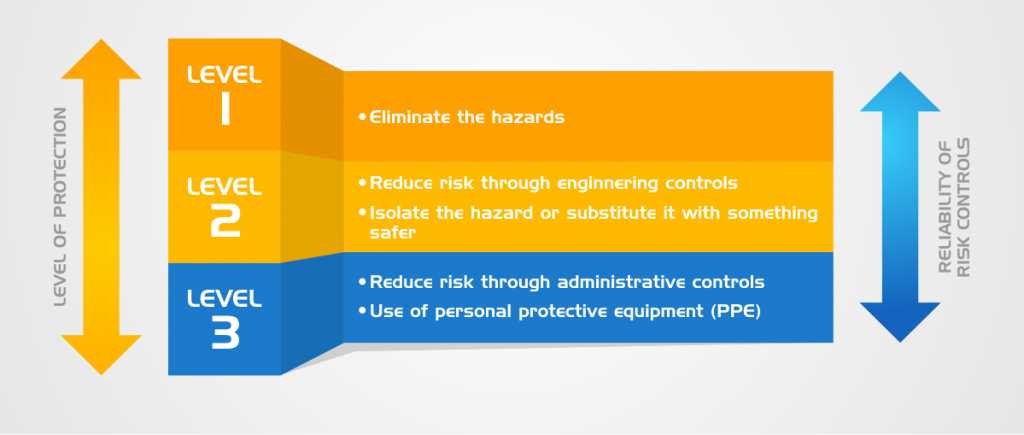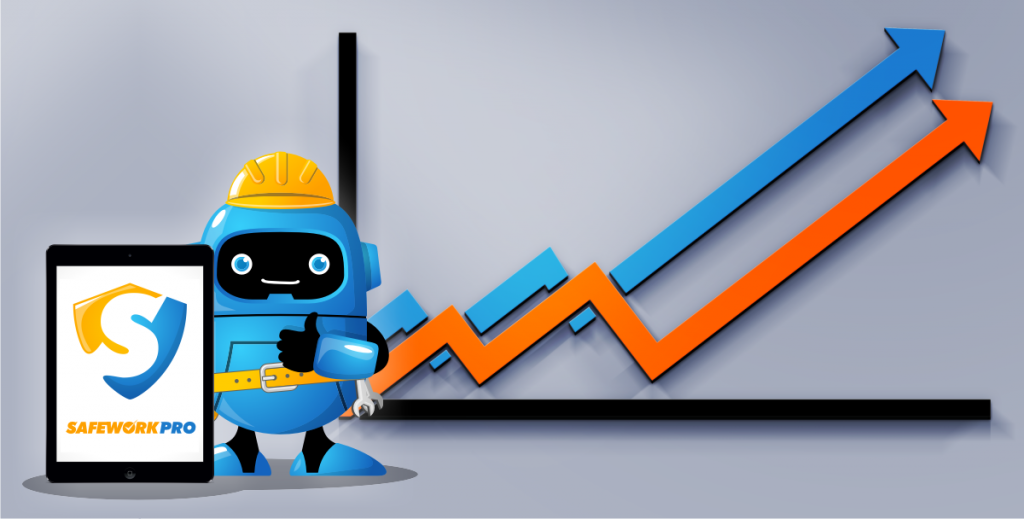3 Signs Safety Software Might Be The Solution For You
Safety software is a relatively new solution to an old problem. Have you ever thought to yourself, there has got to be a better way to stay complaint with safety regulations? Do you ever get frustrated that you have to fill out so many assessments and statements on paper. Do you find yourself missing things in your assessments because you are worried that it’s not in the right format?
These are just some of the frustrations that come with the process of staying compliant with safety regulations. It can have significant effects on your safety culture if you find the process of safety too difficult. If you have ever ran into any of the above, it might be time to consider finding a solution before it becomes too much of a headache that safety goes out the window and all your effort is spent just to be compliant.
In this article we will cover in depth 3 signs that it might be time to consider utilizing safety software before your safety is ignored for compliance.
You’re worried about compliance incase of an incident
Running a business is no easy task. It’s like juggling 10 things at once. When things are going well, it’s a great feeling. But it only takes one slip up or incident to cause everything to come crumbling down. The stress and anxiety of a WHS incident happening in your business is enough to keep anyone up at night. On top of that, if you know you might get slapped with a fine after the incident you’ll always be stressed or worse, you’ll delay reporting an incident. This can lead to huge fines and even jail time. No one wants that.
Safety compliance in the modern day is no simple task. There are a lot of regulations and legislation that you must adhere to in your day to day business. This can become quite a headache and adds to the stress of making sure you have ticked all the boxes. Or worse, leads you to ignoring your requirements and hoping that an incident doesn’t occur. As we have covered in a previous article, incidents happen to even the best of employers who are proactive with safety, its simply the reality of probability. If there is a chance, eventually it will happen.
Ask yourself this. If there was an incident at your workplace tomorrow and it lead to an inspection, would you be confident you would pass? Have you got a solid and refined risk assessment process in place to identify, assess and control risks in your workplace?
If the answer is not a confident yes then it might be time to look at solutions. Safety software like our platform SafeWorkPro allows you to focus on your process more while making the document compliance side of things a worry of the past. While SafeWorkPro won’t solve all of your safety worries, it will help you be more effective with your time so you can spend less time filling out forms and more time focusing on the actions that lead to a safer workplace. We have talked about how your process is more important than your documents in a previous article. In the eyes of the law, the concern is about what you actually do to keep people safe.
If you want to spend more time on safety and less time on the books, then safety software might be the solution for you.
Safety software makes documentation simple and easy
How long does it take you to complete a risk assessment from start to finish? What about a SWMS? Do you find it difficult to complete documents because of all the back and forth that is required between the site, office and in between your workers? If your documentation process is top notch and you have no issues with filling out lengthy paper documents then this might not apply to you. But for those that get frustrated with how much time away from work they have to take to complete documents, this one might be for you.
When the bottle neck for starting a job is the paperwork you need to complete for safety compliance it can become frustrating. It can sometimes feel like too much time is being wasted on paperwork when you could be working. This can lead to rushing through it which defeats its purpose. It also means that you are more likely to skip the processes that really matter to keep people safe.
If you are on a site that needs a SWMS and something changes that requires you to re-evaluate your SWMS, the process starts again and the tools are down until it is done. With safety software, the process of completing documentation is significantly easier. In principle, it is the same but in practice you’re saving time that would otherwise be spent filling a document and running around to get it signed. SafeWorkPro’s simple form based builder allows you to build custom documents which are super simple for your workers to complete on site when needed.
Save the hassle of the back and forth trying to get your documents read and signed by those on site. Have workers fill and sign documents from anywhere on site and have them submitted to the cloud for you to review from any location. SafeWorkPro even lets you get notifications when certain actions happen like a risk rating on a risk assessment matrix being too high or an incident is submitted. SafeWorkPro can help you save time on compliance and let’s you focus on what you do best.
Safety software helps you find old documents quick
Ask yourself this, can you find your risk assessment or SWMS from a job 2 years ago? If you were audited, could you produce it? This is something that isn’t obvious until it is an issue and by then it’s too late. How much of an impact on your day to day operations would a surprise audit have? Would you need to go digging through the back office folders to find the documents required? What a headache!
Even while you are on site, your documents like a SWMS need to be available for everyone to see. While they are there, they are likely to get damaged or degraded by weather. Sometimes, by the time they get stored for safe keeping they are almost falling apart.
With the safety of cloud document storage, SafeWorkPro can store all of your important documents online forever. With all of your documents in one place and neatly organized it’s super simple to find the documents you need, even if they are from years ago. Our software also makes audits quick and easy with next to no disruption in your operations. Export all of the data from your SafeWorkPro site for review without having to spend hours digging through folders, photocopying and physically delivering documents.
Conclusion
If any part of this article resonates with you, it might be time to consider trying out a better solution to using a manual safety process. Beyond just the convenience, SafeWorkPro can help you focus your time on the actions that truly make people safe, not just the actions that make you compliant. At the end of the day, that is what you will be judged on if you have an audit or investigation. Documentation is required of course, but that is simple the surface level when it comes to safety.
If you want to learn more about how SafeWorkPro could help you in simplifying your WHS, reach out to our friendly expert staff for a free, no obligation live demo.
Risk Management Framework
The management of risk is defined by a framework of control measures which prioritise the highest forms of protection down to the lowest. This risk management framework, or hierarchy as it is also known, breaks various risk control methods into three levels ranging from most effective to the least reliable. Under OHS laws and regulations, duty holders are required to work through this framework when conducing risk management in construction.
This is a fundamental part of knowing how to perform a risk assessment.

Level 1 of risk management strategies
The best way to reduce risk in a workplace is by eliminating all hazards completely. For instance, if there is a risk of falling from heights then the best risk management strategy would be to work from the ground level instead. The same applies for hazards like dangerous chemicals or trips and slips.
The rule of ‘reasonable practicality’ states that if eliminating the hazard makes it impossible for the construction service to be delivered then the risks associated with the hazard should be eliminated. An example of this would be wearing a safety harnesses and having a supervisor while working at heights (see level 2).
Level 2 of risk management strategies
If eliminating a hazard or all of the risks associated with it is not reasonably practicable then there are several other approaches that can minimise the involved risks. These risk management tools and techniques include:
- The use of risk assessment engineering controls (eg warning signage, noise barriers, maintenance of machinery)
- Substituting the hazard with a safer alternative
- Isolating the hazard from workers and other affected persons
Level 3 of risk management strategies
This is the least effective and least reliable risk management system because it relies on human behaviour and supervision. When used in isolation, level three of the risk management framework should be carried out in line with appropriate administrative controls (eg rest breaks, job rotations) and with the use of personal protective equipment (PPE).
In regards to the proper use of PPE, regulation 44-47 of the Work Health and Safety Codes of Practice state that the equipment must be:
- “selected to minimise the risk to health and safety”
- “suitable for the nature of the work and any hazard associated with the work”
- “maintained, repaired or replaced so it continues to minimise the risk”
- “a suitable size and fit and [be] reasonably comfortable for the person wearing it”
- “used and worn by the worker, so far is reasonably practicable”
- worn “…in accordance with any information, training or reasonable instruction.”
It is recommended that level 3 risk management strategies be used in conjunction with methods from level 2 or 1 where possible.
For more information on occupational health and safety regulations or on the risk assessment process, check out the SafeWorkPro Blog.
Risk Assessment Tools
The risk assessment workflow traditionally associated with high risk construction work has a major flaw that many in the industry don’t know exists. Paper-based risk assessments, although standard industry practice, have a significant time-cost that cuts into business productivity and complicates safe work practices. Yet there are risk assessment tools available that can remove this issue without undermining workplace health and safety.
These tools are widely known as safety compliance software but are called other names including risk management tools and construction risk assessment software. All these tools relate to the risk assessment process – ie how construction workers identify hazards and implement control measures.

Although vital to safe work practices, risk assessment paperwork is a burden on employee workloads and backend administration. It takes up time on the worksite and back at the office when the paperwork is completed and filed. Yet as software alternatives continue to develop, new risk analysis tools are entering the market and they have the ability to streamline this entire process.
These digital tools take the paperwork out of the risk assessment process. Automated forms take the user through the risk assessment process step by step – just like in a traditional risk analysis table – but every entry is saved and can be used in a future worksite of a similar nature. At every point in the various stages of risk assessment, risk assessment tools like software aim to increase time efficiency and in turn business productivity.
There are many software alternatives to the paper-based risk assessment process in the market but SafeWorkPro was developed in direct consultation with electrical contractors and workers. For more information on the SafeWorkPro software, you can read What is SafeWorkPro? or you can checkout our blog.
Learn How To Create a Safety Culture with Software
Imagine being able to devise, use and share even the most complicated safety documents on your smart phone?
Well you can stop imagining. This will soon become a reality.
Recent innovations in occupational health and safety software mean that safety paperwork like health and safety performance indicators and a material data sheet for chemicals can now be created by individual businesses. The range of safety documents applicable to this new system is almost unlimited which means workers of any type will be empowered to address their workplace’s safety culture and risk.
Software like SafeWorkPro provides workers and managers alike with the tools to create their own safety documents, regardless of their type of work involves. This tool removes the hassle of paperwork from OHS policy and procedures while promoting a safer work environment.
The benefits for workers are quite clear.
Provides a flexible OHS management system
- SafeWorkPro provides workers with the ability to create safety documents that can be designed to best suit an individual worksite. This means safer work practices and an improved level of compliance. It also means that workers won’t be wasting time with documents not suited for their specific working environment.
_1.PNG)
Cultivates a strong safety culture
- By having workers directly involved in the creation of safety documents, SafeWorkPro reinforces the importance of proper health and safety practices into their daily working habits. This in turns brings safety to the front of each worker’s mind, maintains an active knowledge of safe work practices and fosters an improved workplace safety culture.
The involvement of workers in the creation of safety documents is key to the success of SafeWorkPro. As outlined in the Australian Work Health and Safety Strategy 2012-2022, “Within organisations, leaders promote positive cultures by demonstrating a commitment to…role clarity, worker involvement and workgroup cohesion.”
This is the cornerstone of SafeWorkPro – empowering workers with more efficient and flexible safety software systems.





